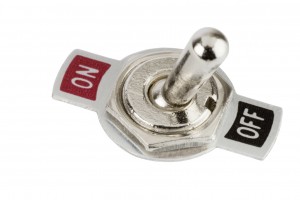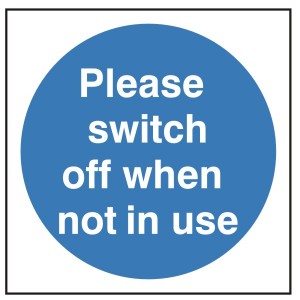[s2If current_user_cannot(access_s2member_ccap_course_001_bm)]
To view this lesson, please purchase this course or log in if you have already purchased it.[/s2If]
[s2If current_user_can(access_s2member_ccap_course_001_bm)]
COURSE OVERVIEW
In this class we’ll work through some great training tools to reinforce attention to you around distractions. But that’s not the main point. My mission for this course is to get you to think in terms of needs. I want you think about how to empower your dog to meet his (or her!) needs, either through immediate action or patience.
This is not just a class about reinforcing behavior that you like. It’s about learning to pay attention and communicate back and forth with our dogs, so we can minimize frustration on both ends of the leash. The solution is to balance your needs and wants with your dogs. Setting boundaries clearly and humanely is an important start. It is equally important to anticipate your dog’s wants and needs and orchestrate a fulfilled lifestyle. You would never starve a dog and then complain that he whines from hunger. Similarly, we should not block a dog from getting his social, exercise, and other needs met and complain when he lets us know.
No wonder so many dogs are barking mad! Human behavior can be crazy-making.
TRAINING: ON / OFF SWITCH
 I’d like to start with a very basic behavior of the dog checking in with you on cue, paired with a release to go be a dog. Checking in on cue in is a good immediate management device that can help dogs who are very focused on dogs, bicycles, or other stimuli in the environment. Looking at something and checking back in with you is also a way for a dog to communicate to you what he wants or needs in a way that’s comfortable for you as well.
I’d like to start with a very basic behavior of the dog checking in with you on cue, paired with a release to go be a dog. Checking in on cue in is a good immediate management device that can help dogs who are very focused on dogs, bicycles, or other stimuli in the environment. Looking at something and checking back in with you is also a way for a dog to communicate to you what he wants or needs in a way that’s comfortable for you as well.
For now, let’s work with the behavior on a verbal cue and then we will transfer it to distractions, so that the distractions themselves become a cue to check in for a bit.
You probably have already worked on attention with your dog, by specifically training his name or a Watch cue. But when you get the dog’s attention, you also have to make sure to then let the dog be a dog most of the time, too. Working with you for treats or play doesn’t satisfy all the social and mental needs of your dog.
Translation: don’t just teach your dog to be glued to your side. I firmly believe that teaching your dog to look at you whenever other dogs are around, no matter what, is not a humane option for dealing with simple frustration and certainly not a good idea with a puppy. It robs the dog all of the subtleties of just be a dog. But responding to a request for attention is still an essential part of being a dog among humans (and the reverse is also true).
What should you choose for an attention cue? The name is pretty straightforward for this, as it means “pay attention: what comes next is for you” If the dog has some negative association with his name, pick something else.
Let’s say you use the dog’s name as a check in cue with your dog. That starts a conversation of cues, with your dog paying attention to you to see what’s in it for him. From there you can reinforce attention until you are done needing it, and then specifically let him know he’s done using the All Done cue.
This is the end of session cue, a true “go be a dog,” not just an “okay, go do that and come right back right away because I feed your addiction.” This part is just as important as the name. Be clear when you are done with the dog to give him some predictability and avoid or cope with frustration. We talk about this in the Building Blocks lessons as one of the 6 most important cues to teach. Look for “6 Cue Words that Every Pet Should Know.”
Here’s a discussion for parents demonstrating the All Done / Finished sign in American Sign Language. I include this video to show you the hand signal, but I also like her discussion. Note that being able to ask or communicate “All Done” is something that helps reduce frustration in people for whom verbal communication is challenging: babies, people with autism, hearing issues, ALS, etc.
For the version of the On / Off Switch activity that I want you to do, there should be something that the dog is actually mildly interested in that is safe for him to explore. Have 10 treats that are better than everything else in the current environment. So for example, you can have your 10 crazy good treats in one bowl on your table and a food puzzle with so-so treats at the ready so the dog can go get it after the All Done cue. (Variation: just toss a handful of so-so treats instead of feeding a puzzle at the end).
When your dog is not looking at you, say his name (or whatever you pick for your check-in cue) and your dog will acknowledge your words in some way. Examples:
- ear twitch
- eye contact
- head turn
- body turn
 Click and treat any and all of these in rapid succession, until you are almost out of treats. You may also want to step away from your dog after each click so that you can click when your dog chooses to follow you. For your last few great treats, click and toss them in one direction.
Click and treat any and all of these in rapid succession, until you are almost out of treats. You may also want to step away from your dog after each click so that you can click when your dog chooses to follow you. For your last few great treats, click and toss them in one direction.
Set the food puzzle down for the dog the other direction (or scatter some so-so treats that way). Step on the toy so your dog can’t get to it yet.
Call your dog. When your dog looks at you one last time, praise him and say “All Done” and give the All Done hand signal.
Then walk past the food puzzle or scattered treats so that your dog encounters the odor.
As your dog enjoys those treats, go do something else – read a book, the Panksepp article above, whatever. But do not start training again. You can probably do it again in 30 minutes or an hour, if you want to, but not right away. The idea is to let your dog know he’s really truly off the clock when you say All Done.
As time goes on, vary the reinforcer so that sometimes you click and tug for a bit, sometimes you click and play fetch, etc. But at the end, you give the All Done cue and the dog is free to go be a dog. Coming back to you at that point does not work to get you back into training.
Try to work in natural settings as soon as possible, so the All Done cue just means to go back to sniffing on a walk, for example, or return to play with his friends.
[/s2If]